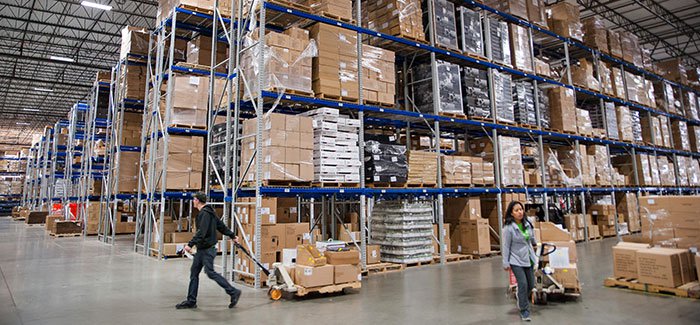
A 3-Step Method to Warehouse Optimization
Wade Brown | 27 September 2017
So, you want to optimize your warehouse, don’t ya? While there are many different areas and processes you can focus on when attempting to optimize your warehouse, the method listed below can be applied to all areas of your warehouse in one form or another.
- Streamline
- Automate
- Standardize
Look around your warehouse. If you haven’t recently, perform each process yourself. Be familiar with the requirements of each process so that you can better identify its needs.
Step 1 – Streamline
This step is all about eliminating the excess.
- Warehouse Flow
- Touches
- Repetitive Travel
Is the operational flow of product in your facility logical? All areas of the warehouse should be located according to how dependent it is relevant to the areas of the warehouse surrounding it. If Area A and Area B have high volumes of traffic flow between them, either one way or both ways, then Area A and Area B are strong candidates to be located directly next to each other.
The opposite also holds true. Do any of your warehouse processes involve multiple touches on any level (each, case, pallet)? Are there touches in the process that are simply placeholders, waiting for the next touch to occur? That is what is known as “double handling”. You touch the product more times than necessary. Touches are time, and time is money. Replenishment, picking, and packing operations are prime areas to start when looking for excessive touches.
Do you consistently manually move a product, case, or pallet in your warehouse from Area A to Area B with a pallet lift, truck, or forklift? If you have repetitive travel like this, then you can reduce labor costs and increase efficiency by eliminating this repetitive travel using Step 2 below.
Step 2 – Automate
This step is all about implementing technology where repetitive actions take place.
- Travel
- Pick and Place
- Employee Interactions with WMS Interface
To eliminate repetitive travel, consider purchasing conveyor to transport your product, case, or pallet. This may seem like an expensive investment upfront, however, the return on investment could prove well worth it. If you have repetitive, manual pick and place operations, robotic automation may be for you. Depending on the frequency and labor cost of this operation, it may not make financial sense for your warehouse to implement robotics, but some areas of your warehouse may benefit. Do you have processes where an employee interacts with your WMS interface? If so, then implementing a database management system (DBMS) such as MS Access could greatly optimize those processes.
Step 3 – Standardize
This step is all about setting rates to your warehouse’s now lean and improved processes. Note: Perform Step 1 and Step 2 first to ensure you are setting standards for an optimized process.
- Best Practices
- Setting Rates
Form a list of “Best Practices”. Spend time with the best/fastest workers for any process. What do they do differently that sets them apart from others doing the same job? Ask them.
Creating a list of “Best Practices” allows the learning curve for new hires to be shortened, as well as help elevate an average worker into a worker who excels. You must set rates (standards) for each process in your warehouse to hold accountability. You can perform time studies, a MOST model, or simply set standards based off your historical data found in your WMS tables (the latter is the least preferable method). Standardizing your warehouse not only holds your employees accountable, but also allows you to optimize your labor force.
If you learn to streamline, automate, and standardize each area or process in your warehouse, you will be much closer to complete warehouse optimization.
Comments
5 Ways to Optimize Your Warehouse Processes with Microsoft Access | The Material Handling Blog says:
8/28/2018 10:09 AM
[…] These five ways to optimize your warehouse processes are not the only ways you can use Microsoft Access, but they are a great start when looking to gain the most out of the processes you have. If you learn to become efficient in simple database creation in Microsoft Access, your possibilities to optimize your warehouse processes are endless. If you want even more ways to optimize your warehouse, please read my blog A 3-Step Method to Warehouse Optimization. […]
Leave a Reply
Your email address will not be published.
Comment
Thank you for your comment.